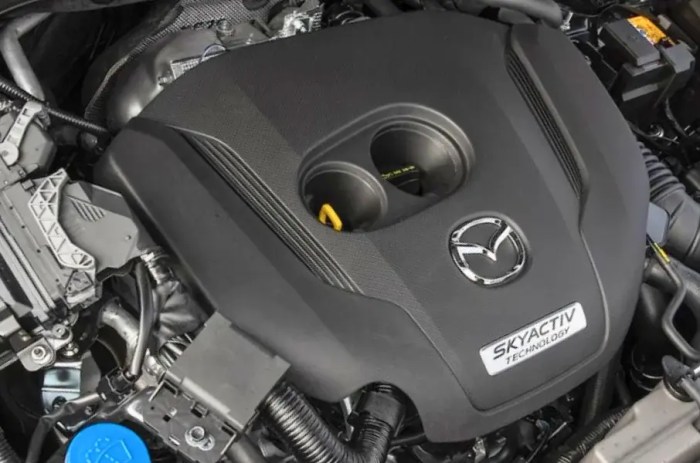Mazda X5 Engine Performance on Highways
Mazda X5 engine performance on highways – The Mazda X5 engine, while not a single, monolithic engine family, represents a range of powertrains developed by Mazda known for their balance of fuel efficiency and performance. This article delves into the performance characteristics of these engines, specifically focusing on their behavior and capabilities on highways. We’ll examine various aspects, from acceleration and passing power to fuel economy and overall driving experience.
Understanding the Mazda X5 Engine Family
It’s crucial to clarify that “Mazda X5 engine” isn’t a formal designation used by Mazda. Instead, it often refers colloquially to a range of four-cylinder engines, predominantly found in Mazda vehicles from the early 2000s onward. These engines, while sharing design philosophies, vary in displacement, specifications, and power outputs. Some key characteristics that often define engines grouped under this informal “X5” umbrella include:
- Inline-four cylinder configuration: This layout is common, offering a good balance of compactness, smoothness, and fuel efficiency.
- Variable Valve Timing (VVT): Most, if not all, engines under this umbrella incorporate VVT systems to optimize performance and fuel economy across the rev range.
- Direct Injection (in later models): Many later iterations of these engines feature direct injection, further enhancing efficiency and power delivery.
- Displacement variations: The actual displacement varies, with common sizes ranging from approximately 1.8L to 2.5L.
Highway Performance: Acceleration and Passing
The highway performance of an “X5” engine (again, referencing the informal grouping) is heavily dependent on the specific engine’s displacement and power output. Generally speaking, smaller displacement engines (e.g., around 1.8L to 2.0L) will offer adequate acceleration for merging and maintaining highway speeds, but might feel less responsive during passing maneuvers, especially when fully loaded or climbing steep inclines.
Larger displacement engines (e.g., 2.3L and 2.5L) usually provide more confident acceleration and passing power, making highway driving a more relaxed experience.
Factors Affecting Highway Performance, Mazda X5 engine performance on highways
- Transmission: The type of transmission (automatic vs. manual) and gear ratios significantly impact highway performance. A well-matched automatic transmission can optimize gear selection for smooth acceleration and efficient cruising. Manual transmissions offer more driver control but require more active engagement.
- Vehicle Weight: Heavier vehicles will naturally require more power to accelerate and maintain speed on the highway, thus impacting the perceived performance of the engine.
- Aerodynamics: The vehicle’s aerodynamics play a crucial role in fuel efficiency at higher speeds. A more aerodynamic design will reduce drag, allowing the engine to work less hard at highway speeds.
- Altitude: Driving at higher altitudes reduces engine power due to thinner air, affecting both acceleration and passing ability.
Highway Fuel Economy: Mazda X5 Engine Performance On Highways
Fuel economy on the highway is another key consideration. Mazda engines, generally speaking, are designed for efficiency. The “X5” family is no exception. Factors influencing highway fuel economy include:
- Engine Displacement: Smaller displacement engines typically offer better fuel economy than larger ones at highway speeds.
- Driving Style: Aggressive acceleration and high speeds will significantly reduce fuel economy.
- Vehicle Weight: Heavier vehicles require more fuel to maintain highway speeds.
- Tire Pressure: Properly inflated tires improve fuel efficiency by reducing rolling resistance.
- Cruise Control: Utilizing cruise control can help maintain a consistent speed, improving fuel economy.
Maintenance and Longevity on Highways
Regular maintenance is crucial for ensuring optimal performance and longevity, especially when frequently driving on highways. Highways often involve sustained high speeds and potentially demanding driving conditions. Key maintenance aspects include:

Source: com.my
- Regular Oil Changes: Using the recommended oil and filter and adhering to the manufacturer’s recommended oil change intervals is vital for engine health.
- Transmission Fluid Changes: Regular transmission fluid changes are important for automatic transmissions, ensuring smooth shifting and preventing premature wear.
- Cooling System Maintenance: A properly functioning cooling system is essential for preventing overheating, particularly during extended highway driving.
- Tire Rotation and Balancing: Regular tire rotation and balancing will improve handling and tire wear, especially at higher speeds.
Common Issues and Troubleshooting
While generally reliable, some issues have been reported with certain “X5” engines. These can vary depending on the specific engine variant and year of manufacture. It’s always recommended to consult a qualified mechanic for diagnosis and repair.

Source: pedalbox.com
FAQ: Mazda X5 Engine Highway Performance
- Q: How does the Mazda X5 engine perform on long highway trips? A: Performance depends on the specific engine and vehicle. Larger displacement engines offer better passing power, while smaller ones prioritize fuel efficiency. Regular maintenance is key for long trips.
- Q: What is the average highway fuel economy for a Mazda with an “X5” engine? A: This varies greatly depending on factors like engine size, vehicle weight, driving style, and road conditions. Expect a range, with smaller engines generally achieving better mileage.
- Q: Are there any common problems with Mazda X5 engines on highways? A: While generally reliable, specific issues might arise depending on the engine variant and year. Regular maintenance is crucial for preventing problems.
- Q: How can I improve the highway performance of my Mazda with an “X5” engine? A: Ensure proper maintenance, use high-quality fuel, and maintain optimal tire pressure. Consider driving style adjustments for better fuel economy.
Sources
While specific technical data for the informal “X5” engine grouping isn’t readily available from a single source, information can be gleaned from various Mazda owner forums, repair manuals specific to individual engine models, and general automotive engineering resources. Always consult your vehicle’s owner’s manual for the most accurate and relevant information regarding your specific engine and vehicle.

Source: overfuel.com
Call to Action
Ready to experience the highway performance of a Mazda? Visit your local Mazda dealership for a test drive and explore the range of Mazda vehicles powered by efficient and reliable engines. Learn more about Mazda’s commitment to engineering excellence at [insert Mazda website link here].
Questions and Answers
What is the typical highway fuel economy of a Mazda X5?
Highway fuel economy for a Mazda X5 varies depending on the specific model year, engine size, and driving style, but generally falls within a range acceptable for its class.
How does the Mazda X5 handle passing maneuvers on the highway?
The Mazda X5 typically offers adequate power for safe and confident passing maneuvers on highways, though this can be affected by factors such as uphill gradients and vehicle load.
Are there any known engine issues specific to highway driving in the Mazda X5?
No widespread engine issues specifically linked to highway driving have been consistently reported for the Mazda X5. Regular maintenance is always recommended for optimal performance and longevity.
How does the Mazda X5’s engine perform at higher altitudes on highways?
The Mazda X5 engine delivers commendable performance on highways, offering a good balance of power and fuel efficiency. However, before committing to a Mazda CX-5, it’s wise to compare its safety features with competitors like the Subaru Forester; a helpful resource for this comparison is available here: Mazda CX-5 vs Subaru Forester safety ratings. Ultimately, the X5’s highway prowess is a key factor, but safety should always be a primary consideration.
Engine performance might slightly decrease at higher altitudes due to thinner air, but this effect is generally minor and within the expected range for naturally aspirated engines.





